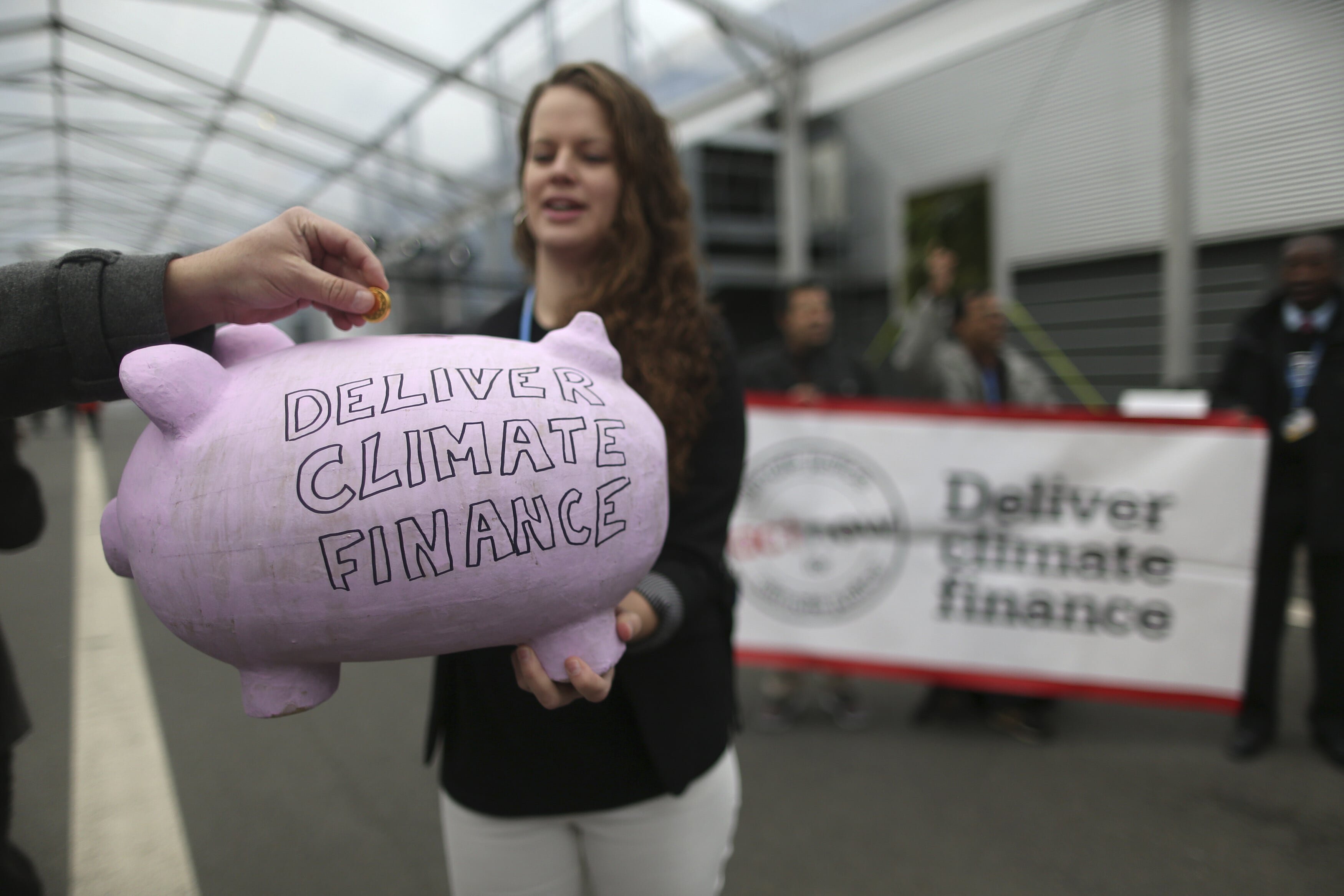What is Earth? How We Answer Could Define Our Future
Defining what we mean by 'Earth' is not as simple as you might imagine.
Image: NASA/Reuters
Stay up to date:
Climate Crisis
Ask a group of scientists “What is Earth?” and you may be in for a surprise.
“Earth is a sinusoidal signal in velocity with a period of a year, and an amplitude of 10 cm/s," an astronomer tells us. An atomic physicist, on the other hand, calls Earth “an astronomical body whose surface seems to contain almost every atom from the periodic table”. For an evolutionary plant biologist, Earth has been a “home for the evolution of life for more than three billion years”. A philosopher answers that Earth is a place where “human freedom leads us to wonder at the laws of physics and biology while asking why”.
The geological approach is to characterise the planet in search of distinctive traits. Geoscientists ask: why are mineral resources so rare and unevenly distributed across continents? What controls the shape of mountains and the sea floor, and the periodic oscillations of climate over decades to millions of years? Could the structure and rhythms of our planet be unique in the Solar System? To build the grand genealogy of our world, geoscientists seek traces of the past and the origins of everything we see: continents, the magnetic field, ice-caps, soils, and the minerals of the deep mantle and core. We give them a name and a date, and we sort them in chronological order. But the result is anything but a clear-cut definition. On the contrary, we find Earth increasingly difficult to define.
The first reason for this is that the Earth is dynamic and subject to all kinds of transformations at all scales. Almost everything around us – glaciers, atmospheric oxygen, soils, and even the continents – has looked, smelled, and behaved differently over the course of millions of years. For example, Antarctica’s ice cap formed only recently, around 30-40 million years ago; even soils composed of organic matter and minerals did not exist before algae and plants with roots conquered the terrestrial environment 300-500 million years ago.
What is Earth and Why is it difficult to define
Another reason Earth is difficult to define is that it has been influenced by the evolution of biological life. Consider the abundance of liquid water, the longevity of plate tectonics, and the abundance and diversity of organic materials in contact with our atmosphere, which is bathed in reactive oxygen. These are some of Earth’s most distinctive traits, and yet they all appear to be direct, or indirect, products of life. Ozone and oxygen started to accumulate in the atmosphere about 2.3 to 2.4 billion years ago, shortly after the evolution of oxygenic bacteria that produce dioxygen as waste. As a result, water became locked on our planet, instead of slowly escaping to space as it did on Venus. And because water is essential to sustaining active tectonics, our planet’s peculiar dynamics too may be remotely linked to the longevity of photosynthetic life. In the Anthropocene we, too, have become a geological force. Today, our society releases in a few days the equivalent of a year of volcanic CO2 emissions without compensating sink; hence CO2 accumulates in the atmosphere, ocean and biosphere at a frenetic pace. Symptoms of this imbalance include rapid atmospheric warming, ocean acidification and ocean deoxygenation.
Just as biological life influences the evolution of the Earth system as a whole, the Earth system guides and shapes the evolution of biological life. Weathered continents provide the essential nutrients for organisms to grow, and environmental change acts as a selective agent that shapes the structure, elemental composition and evolution of ecosystems at the finest molecular levels. A long-term decline in atmospheric CO2 may have promoted the evolution of new, highly efficient biological pathways to lock atmospheric CO2 into organic molecules. These pathways drive grassland ecosystems in the steppes of Eurasia and America today.
Another answer to what is Earth is that Earth is an interconnected system, with a range of feedbacks operating over anything from seconds to billions of years, which connect the biosphere to the geosphere. While there is much we do not know about this system, what we do know is that we are modifying it at a fast pace. But change is not new to Earth. The evolution of oxygenic photosynthesis 2.4 billion years ago, and the rise of land plants hundreds of million years ago, have literally transformed the planet. And just like bacteria, humans have disrupted and reshaped the carbon cycle by amassing technological power, thoroughly harvesting energy and releasing waste into the environment.
So what’s new? That we are operating with conscious effort, and that we are proving unresponsive in face of the emerging planetary challenges, unable to adapt our constructed definitions of successful behaviour. In 2015, the United Nations adopted 17 Sustainable Development Goals, including targets relating to poverty, education and the environment, which illuminate the gap between the world we genuinely hope for and the reality that we have built. As we grapple with these issues while simultaneously plunging into the Fourth Industrial Revolution, there is a growing sense that the solution may not come from our technologies, but from our relationship to them.
In an interconnected Earth system, our greatest asset is our unique capacity to connect even more. We are able to see value not only in rare resources, as any living organism does, but almost everywhere: in works of art and intellect, in the health of present and future ecosystems, and in the lives of strangers on the other side of the globe. Our capacity to knit not only physical but also intellectual and emotional relationships changes everything, because it makes us able to choose our actions and care for our home, the Earth. For the first time in geological history, we can even restrain collectively from using the power that we have, and we can act for no other reason than it is the right thing to do. This is the realm of ethics and the responsibility of individuals and society alike.
Changing our trajectory will be challenging as we rely on imperfect knowledge, we experience real and imagined social pressures, and we face competing demands on our time and money. Change will require innovative collective effort and working from within to transform the systems we have built. Luckily, we can thrive in the face of challenges when we experience agency, compassion, purpose and resilience.
If, two centuries after the first Industrial Revolution, hundreds of millions are still starving while the oceans "warm, turn sour and the air becomes unbreathable", it is because we have largely surrendered our fate to what we’re capable of, instead of founding it on what’s desirable for all. From this perspective, surprisingly, many of our struggles reflect a lack of ambition on our part rather than an excess of it. With the benefit of geological hindsight, it seems that the fundamental revolution of the Anthropocene can only be ethical. Will we choose restraint?
Don't miss any update on this topic
Create a free account and access your personalized content collection with our latest publications and analyses.
License and Republishing
World Economic Forum articles may be republished in accordance with the Creative Commons Attribution-NonCommercial-NoDerivatives 4.0 International Public License, and in accordance with our Terms of Use.
The views expressed in this article are those of the author alone and not the World Economic Forum.
Forum Stories newsletter
Bringing you weekly curated insights and analysis on the global issues that matter.
More on Climate ActionSee all
Wee Kean Fong and Yvonne Zhou
July 29, 2025
Pranidhi Sawhney and Adam Skali
July 29, 2025
David Carlin and Sourajit Aiyer
July 28, 2025
Nasim Pour, Sebastien Cross and Joel Gould
July 28, 2025
Michael Wang
July 28, 2025
Naoko Tochibayashi
July 28, 2025





